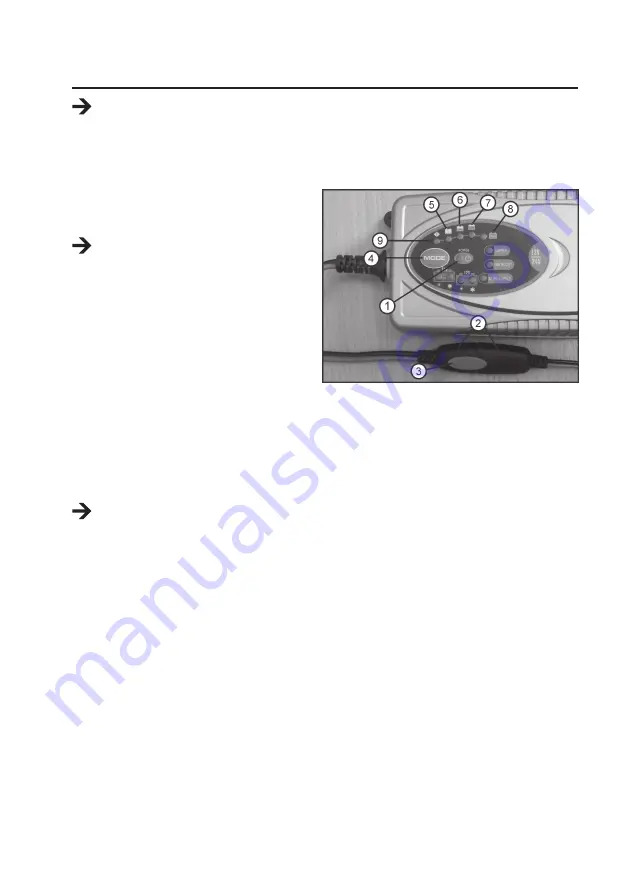
22
7. CoNNECTIoN, STArT-uP, ChArgINg
For charging batteries in the charging programmes “Mode 1 to 5”, the battery can remain connected to the
vehicle electronics.
For charging with Mode 6, the battery absolutely must be disconnected from the vehicle electronics. Failure
to comply with this requirement carries the risk that the vehicle electronics will be damaged by excessive
voltage.
a) Connect the charger to a mains socket (220 - 240 v
alternating voltage). The “Power” LED lights up
(Fig. 2, Item 1). The device is now in standby mode.
With the exception of Mode 5 and 6, the charger
saves the last charging programme used. You
could therefore also connect the charger to a bat-
tery first and then connect the charger to a mains
socket (220 - 240 v alternating voltage). In this
case, the charging process begins with the last
charging programme used (Mode 1 to 4). The
corresponding LED lights up.
b) Attach the charging cable adapter with the alligator clips to the charging cable until it engages (Fig. 2, Pos 2).
This connector system (as well as the charging cable adapter with fuse for permanent connection) is secured
against polarity reversal and can be put together in only one position. To disconnect, you need to push the red
rocker on the adapter (Figure 2, Pos. 3) on the “charging cable side” inwards a bit and then release the connec-
tion. Now attach the red alligator clip to the positive terminal, the black alligator clip to the negative terminal of
the battery.
Alternatively, instead of alligator clips for mobile use, you can also use charger cable adapter with fuse for
permanent connection with the battery in the vehicle. To do this, attach the black cable with the eyelet shoe to
the negative terminal, the red cable with the eyelet shoe to the positive terminal of the battery to be charged.
Proceed carefully when doing this; avoid short circuits and pay attention to a secure contact.
A 10 A fuse with fuse holder is built into this “permanent connection adapter” under the rubber casing. If the
charging process does not start, this fuse may be defective. In this case, replace the fuse and check the
cabling.
With a permanent connection, make sure that neither the charger nor the connections of the charging cable
are exposed to moisture. Operation of the charger in the installed state (permanent connection in the vehicle)
is permitted only in dry, enclosed rooms (e.g., a garage).
If the charger is not connected to the mains, a low return current flows, which discharges the battery. For this
reason, we recommend the permanent connection only in vehicles that are regularly moved and charged.
The charger has two screw holes on the underside of the housing for installation in a vehicle.
c) Use the “Mode” button (Fig. 2, Pos. 4) on the charger to select the appropriate charging programme (Mode 1
to 6). To do this, press the “Mode” button repeatedly until the desired state is reached.
figure 2
















































